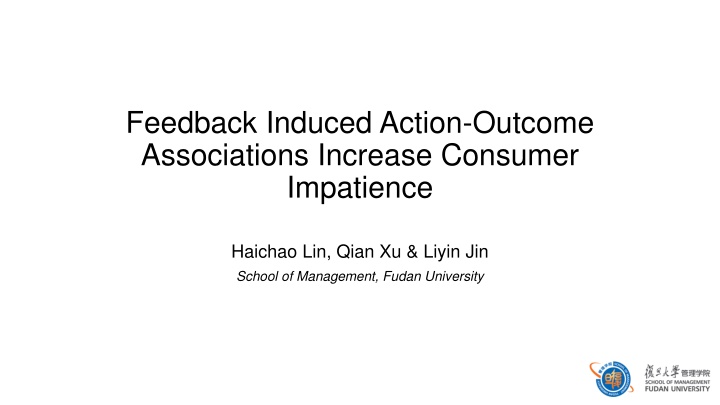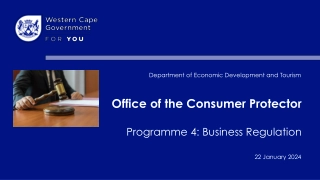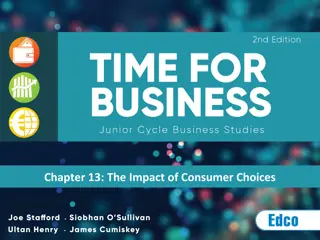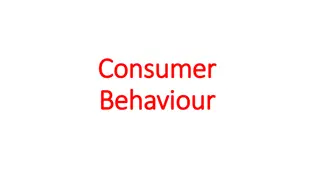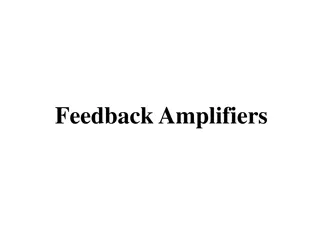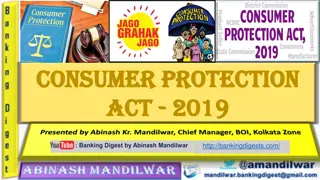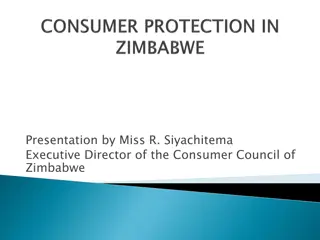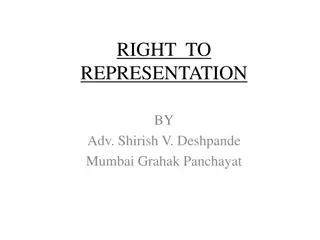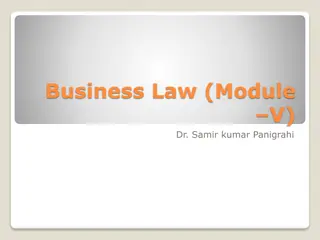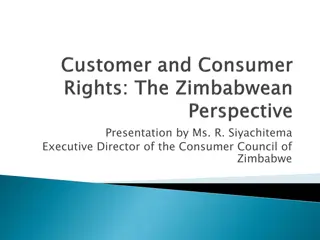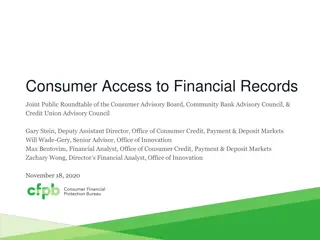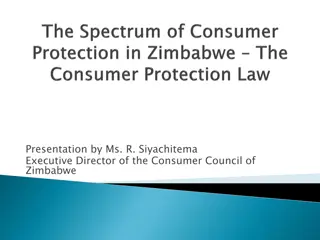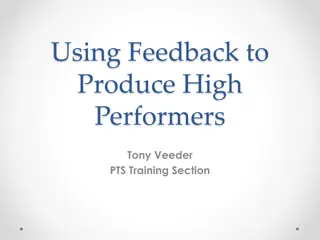Impact of Feedback on Consumer Impatience Trends
This study explores how different feedback procedures influence consumer impatience in subsequent consumption decisions. The research examines various aspects such as feedback valence, form, and schedule, shedding light on the complex relationship between feedback and consumer behavior.
Download Presentation

Please find below an Image/Link to download the presentation.
The content on the website is provided AS IS for your information and personal use only. It may not be sold, licensed, or shared on other websites without obtaining consent from the author.If you encounter any issues during the download, it is possible that the publisher has removed the file from their server.
You are allowed to download the files provided on this website for personal or commercial use, subject to the condition that they are used lawfully. All files are the property of their respective owners.
The content on the website is provided AS IS for your information and personal use only. It may not be sold, licensed, or shared on other websites without obtaining consent from the author.
E N D
Presentation Transcript
Feedback Induced Action-Outcome Associations Increase Consumer Impatience Haichao Lin, Qian Xu & Liyin Jin School of Management, Fudan University
Background Feedback is prevalent in consumers daily lives Procedure: piecemeal vs. lump-sum (Zhang & Gao, 2016) Valence: positive vs. negative (Hsee et al., 2015; Skinner, 1953) Form: monetary vs. informative (Jin et al., 2021; Kim et al., 2018) Schedule: fixed ratio vs. variable ratio (Garr et al., 2020; Skinner, 1974)
Research Question Previous research: how feedback reinforces consumer behavior (Shen et al., 2019) Feedback Action The current research: whether receiving feedback via various procedures will carry over to influence consumer impatience in subsequent consumption decisions ? Feedback Action
Theoretical Framework Piecemeal feedback Action Outcome Consumer Impatience Action Outcome Lump-sum feedback
Overview of Studies Feedback procedure, feedback valence, and impatience domain (S1) Feedback procedure and feedback form (S2) Main Effects Feedback schedule to manipulate the action-outcome association (S3) Filler task to cut the action-outcome association (S4) Inaction task to cut the action-outcome association (S5) Boundary Conditions Feedback procedure and action goal activation (Pretest) Feedback procedure and action-outcome association (Supplementary Study) Mechanism
Study Information: Main Effects Study 1 Design: 2 (feedback procedure: piecemeal vs. lump-sum) 2 (feedback valence: positive vs. negative) 2 (impatience domain: gain vs. loss) between-subjects design Procedure: game testing survey on daily consumption about imported products Impatience results: piecemeal > lump-sum; negative ~positive; gain > loss; interactions (NS) Study 2 Design: 3-cell (monetary piecemeal feedback vs. informative piecemeal feedback vs. lump-sum feedback) between-subjects design Procedure: identification task survey on daily consumption about online purchasing Impatience results: piecemeal (monetary ~ informative) > lump-sum
Study Information: Boundary Conditions Study 3 Design: 4-cell (12-fixed piecemeal feedback vs. 4-fixed piecemeal feedback vs. 4-variable piecemeal feedback vs. lump-sum feedback) between-subjects design Procedure: customization task lottery (choice of reward) Impatience results: 12-fixed piecemeal ~ 4-fixed piecemeal > 4-variable piecemeal ~ lump-sum Study 4 Design: 2 (feedback procedure: piecemeal vs. lump-sum) 2 (action-outcome association: baseline vs. weak) between-subjects design Procedure: movie poster rating task (product evaluation task) lottery (WTP for expedited shipping) Impatience results: interaction (baseline: piecemeal > lump-sum; weak: piecemeal ~ lump-sum) Study 5 Design: 2 (feedback procedure: piecemeal vs. lump-sum) 2 (feedback target: action vs. inaction) between-subjects design Procedure: game lottery (WTP for expedited fee) Impatience results: interaction (action: piecemeal > lump-sum; inaction: piecemeal ~ lump-sum)
Study Information: Mechanism Pretest Design: 2-cell (piecemeal feedback vs. lump-sum feedback) between-subjects design Procedure: game lexical decision task Action goal results: piecemeal > lump-sum Supplementary Study Design: 2-cell (piecemeal feedback vs. lump-sum feedback) between-subjects design Procedure: game word listing task Action-outcome association results: piecemeal > lump-sum
Takeaway Key Findings Piecemeal feedback Consumer impatience Theoretical Implications Feedback procedure (piecemeal vs. lump-sum) and consumer impatience Feedback schedule (fixed ratio vs. variable ratio) and consumer learning Action-outcome associations and action goal activation Conceptualization of consumer impatience (preference toward now options)
Author Contact Information Haichao Lin Qian Xu Liyin Jin hclin15@fudan.edu.cn qianxu@fudan.edu.cn jinliyin@fudan.edu.cn
